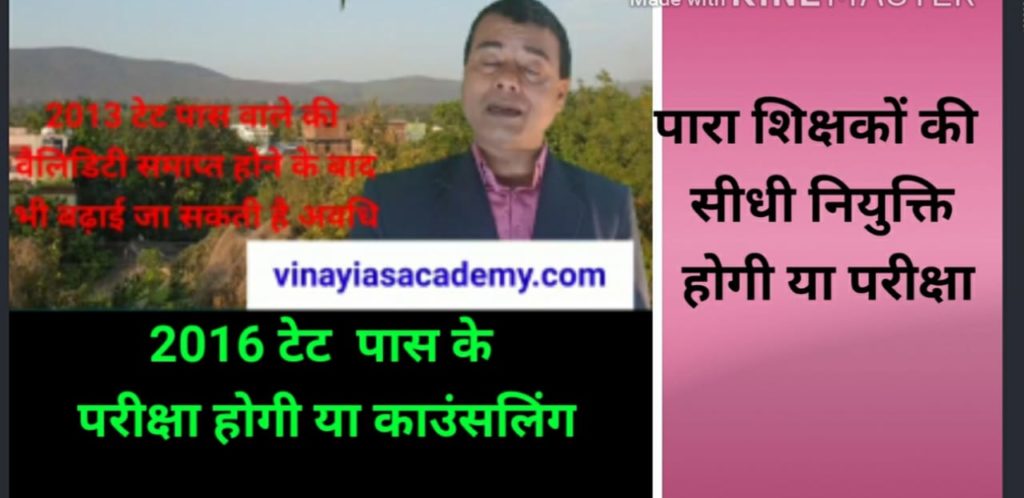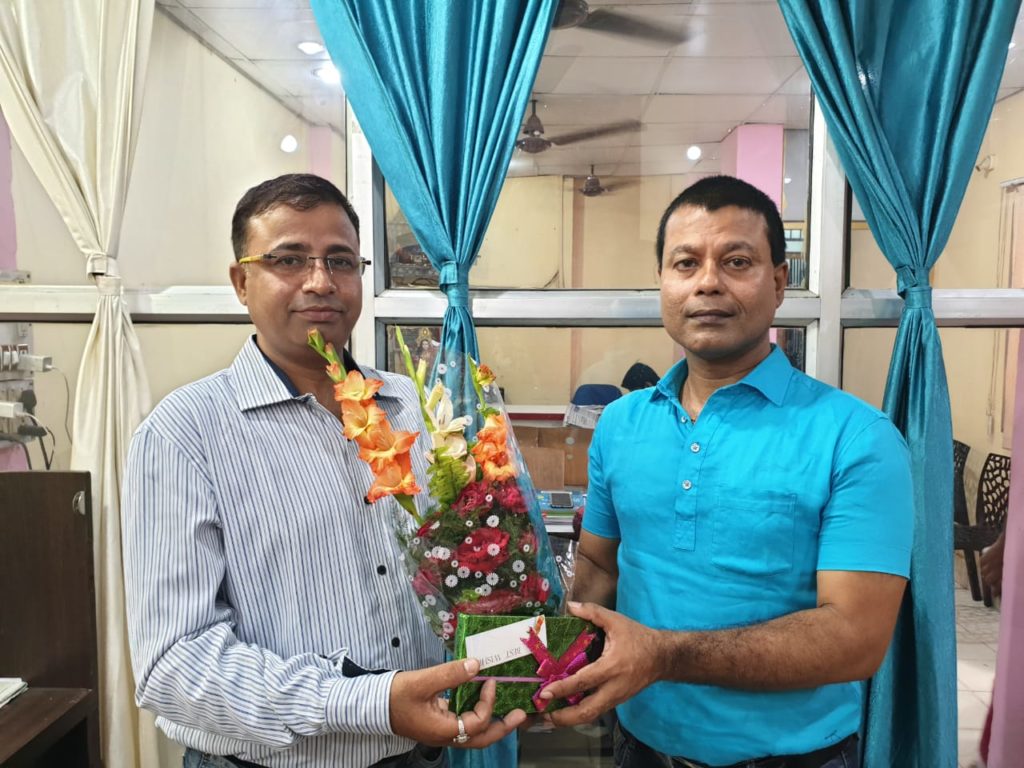Vinay IAS Acdemy is the best academy for students. in jamshedpur and all over India.
We Bring You The World's Best Courses From All The Top Publishers.
विनय आईएएस अकैडमी में 1 वर्ष 2 वर्ष एवं 3 वर्ष का सिविल सर्विस के लिए तैयारी करने के लिए एडमिशन लिया जाता है यहां गर्ल्स एवं बॉयज के लिए अलग से हॉस्टल की व्यवस्था है साथ ही डिग्री कोर्सेज भी उपलब्ध है आप तैयारी करने के लिए बेस्ट फैकेल्टी टीम की मदद विनय आईएस में ले सकते हैं 06572233331/9431156794

Our Latest Video
What Students Say?
Why Vinay IAS?
विनय आईएएस अकैडमी वर्ष 2000 ईस्वी में विनय सिंह एवं आईएएस आईपीएस के मार्गदर्शन में शुरुआत की गई थी इसकी स्थापना जमशेदपुर में की गई थी एवं इसका कॉरपोरेट ऑफिस शिमला में स्थापित है .विनय आईएएस एकेडमी के वर्तमान में 40 शाखा कार्य कर रहे हैं तथा अभी तक विनय आईएएस अकैडमी में वर्ष 2020 ईस्वी तक में लगभग 200000 छात्र-छात्राओं ने मार्गदर्शन प्राप्त किया है आईएएस एवं झारखंड लोक सेवा आयोग की सभी परीक्षा की तैयारी करवाने वाली के प्रमुख संस्था बन गई है. एडमिट क्लासेस जून 2020 से शुरू हो रही है. विनय आईएएस अकैडमी में वर्ष 2002 ईस्वी से बैंक पीओ रेलवे एसएससी नेशनल डिफेंस एकेडमी एयरफोर्स नेवी एवं अप्रेंटिस की तैयारी शुरू कराई गई है. विनय आईएएस अकैडमी में वर्ष 2008 ईस्वी से आईआईटी मेडिकल की तैयारी शुरू कराई गई है
Certification- विनय आईएएस अकैडमी वर्ष 2001 से ट्रेडमार्क कंपनी है एवं इसका रजिस्ट्रेशन है जमशेदपुर अधिसूचित क्षेत्र समिति द्वारा वर्ष 2001 से विनय आईएएस अकैडमी को व्यापार का लाइसेंस प्राप्त है, विनय आईएएस अकैडमी को ट्रेड एवं मर्चेंटाईल एक्ट का लाइसेंस प्राप्त है , सर्टिफिकेशन है
Reputation- विनय आईएएस अकैडमी वर्ष 2020 से लगातार सिविल सेवा और राज्य लोक सेवा आयोग के विभिन्न परीक्षा में सैकड़ों सफलताएं दे चुका है, झारखंड दिल्ली हिमाचल प्रदेश बिहार स्थित इस एकेडमी की खासियत यह है कि यहां पर रहने वाले लगभग 90% से अधिक छात्र-छात्राओं का प्लेसमेंट हो जाता है, यही कारण है कि बैंक पीओ रेलवे स्टाफ सिलेक्शन कमीशन में सैकड़ों छात्र-छात्राएं विनय आईएएस अकैडमी से जुड़े हुए हैं ,इस एकेडमी में पढ़ाने वाले फैकेल्टी विनय सिंह के अलावा अलग-अलग क्षेत्र के हैं जो विभिन्न सेवाओं में कार्य कर रहे हैं
विनय आईएएस अकैडमी में 1 वर्ष 2 वर्ष एवं 3 वर्ष का सिविल सर्विस के लिए तैयारी करने के लिए एडमिशन लिया जाता है यहां गर्ल्स एवं बॉयज के लिए अलग से हॉस्टल की व्यवस्था है साथ ही डिग्री कोर्सेज भी उपलब्ध है आप तैयारी करने के लिए बेस्ट फैकेल्टी टीम की मदद विनय आईएस में ले सकते हैं 06572233331/9431156794
विनय आईएएस अकैडमी फी स्ट्रक्चर#1. आईएएस परीक्षा यूपीएससी एवं सिविल सेवा- 3 वर्षों का पाठ्यक्रम डिग्री कोर्स के साथ एवं हॉस्टल सुविधा के साथ- 3.50 lacs# 2 वर्ष का पाठ्यक्रम-2.5o lacs# 1 वर्ष का पाठ्यक्रम-1.25 lacs
झारखंड लोक सेवा आयोग जेपीएससी की परीक्षा प्रारंभिक मुख्य एवं साक्षात्कार-85000
बैंक पीओ रेलवे एवं स्टाफ सिलेक्शन कमीशन की परीक्षा प्रारंभिक मुख्य एवं साक्षात्कार-32000
नेशनल डिफेंस अकैडमी एनडीए परीक्षा-32000
एयरफोर्स नेवी अपरेंटिस-16000
सिर्फ स्टडी मेटेरियल एवं नोट्स- ₹2000 प्रति पेपर
विनय आईएएस अकैडमी फी स्ट्रक्चर#1. आईएएस परीक्षा यूपीएससी एवं सिविल सेवा- 3 वर्षों का पाठ्यक्रम डिग्री कोर्स के साथ एवं हॉस्टल सुविधा के साथ- 3.50 lacs# 2 वर्ष का पाठ्यक्रम-2.5o lacs# 1 वर्ष का पाठ्यक्रम-1.25 lacs
झारखंड लोक सेवा आयोग जेपीएससी की परीक्षा प्रारंभिक मुख्य एवं साक्षात्कार-85000
बैंक पीओ रेलवे एवं स्टाफ सिलेक्शन कमीशन की परीक्षा प्रारंभिक मुख्य एवं साक्षात्कार-32000
नेशनल डिफेंस अकैडमी एनडीए परीक्षा-32000
एयरफोर्स नेवी अपरेंटिस-16000
सिर्फ स्टडी मेटेरियल एवं नोट्स- ₹2000 प्रति पेपर
विनय आईएएस अकैडमी में 1 वर्ष 2 वर्ष एवं 3 वर्ष का सिविल सर्विस के लिए तैयारी करने के लिए एडमिशन लिया जाता है यहां गर्ल्स एवं बॉयज के लिए अलग से हॉस्टल की व्यवस्था है साथ ही डिग्री कोर्सेज भी उपलब्ध है आप तैयारी करने के लिए बेस्ट फैकेल्टी टीम की मदद विनय आईएस में ले सकते हैं 06572233331/9431156794
विनय आईएएस अकैडमी में 1 वर्ष 2 वर्ष एवं 3 वर्ष का सिविल सर्विस के लिए तैयारी करने के लिए एडमिशन लिया जाता है यहां गर्ल्स एवं बॉयज के लिए अलग से हॉस्टल की व्यवस्था है साथ ही डिग्री कोर्सेज भी उपलब्ध है आप तैयारी करने के लिए बेस्ट फैकेल्टी टीम की मदद विनय आईएस में ले सकते हैं 06572233331/9431156794














